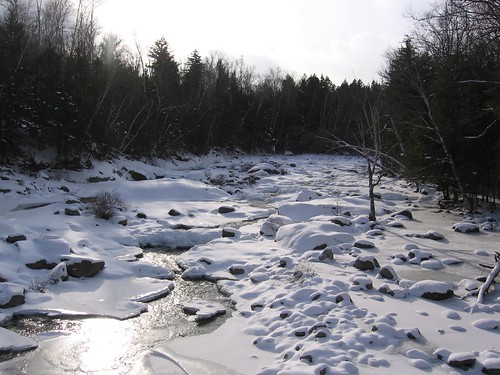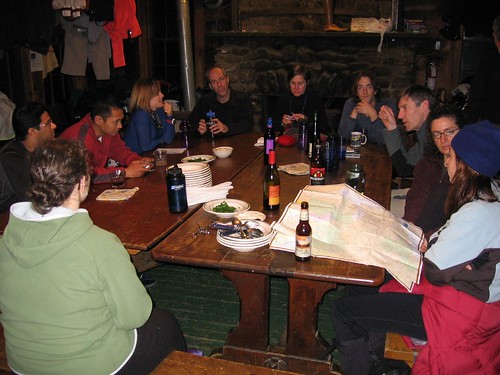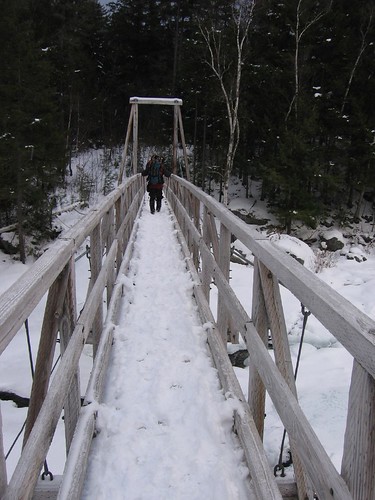
That extreme cold numbs the brain and slows down response time was not an excuse we could use. Well, not yet. Especially after a comfortable and cozy drive to New Hampshire and Harvard Cabin for the winter hiking program “debug the gear”, weekend in December.
The propane tank is leaking. The propane tank is empty. The circuit breaker is sticking or not sticking. For more than 30 minutes - as one of the early arrivals at Harvard Cabin on a Friday evening in December when the external thermometer read 19F and the one inside the cabin read 10F – five others and I attempted to master lighting the massive heater.
The fact that the cooker in the kitchen wouldn’t light either re-enforced the no gas theory and brought fresh concerns. Yes, we could layer up, keep moving or simply go to bed in zero degree bags we were instructed to bring. Mine was only rated to 15F, but that wasn’t the problem on my mind. Cooking food and melting snow for water, now that was a problem, although we wouldn’t starve – not with a brewpub 10 minutes down the road.
The heater instructions were long, but straightforward. All except the initial one that told of operating a switch above the breaker box. Now my definition of a breaker box is also straightforward. It is a box with breakers inside. There was no switch above it and so no switch was switched, making the execution of the next seven or eight steps meaningless.
Folks, the switch is IN the breaker box – above a bank of breakers. It is in itself a breaker and looks like the master switch of a normal breaker box.
I can’t remember who made the discovery, but I know I went to the cooker one more time, turned the knob, smelled gas and lit it. I went through similar steps with the heater and we were all set for the weekend.

 Things I learned or would like others to learn.
Things I learned or would like others to learn. That extreme cold numbs the brain and slows down response time was not an excuse we could use. Well, not yet. Especially after a comfortable and cozy drive to New Hampshire and Harvard Cabin for the winter hiking program “debug the gear”, weekend in December.
That extreme cold numbs the brain and slows down response time was not an excuse we could use. Well, not yet. Especially after a comfortable and cozy drive to New Hampshire and Harvard Cabin for the winter hiking program “debug the gear”, weekend in December.